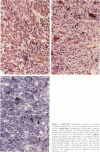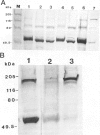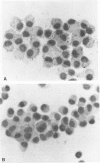Abstract
Nitric oxide (NO) is generated by the NO synthase family of isozymes, which is present in many mammalian cells. The constitutive NO synthase isozymes generate NO, which acts via signal transduction mechanisms in the regulation of many functions including vascular tone and blood pressure, and the inducible isozymes mediate immunological mechanisms by cytotoxic and cytostatic effects. To determine whether NO has a role in anterior pituitary cell function, immunohistochemistry and in situ hybridization analyses were used to study NO synthase expression in normal and neoplastic human pituitary tissues. Brain NO synthase was localized in the anterior pituitary in secretory and in folliculo-stellate cells and in the posterior pituitary. Pituitary adenomas had higher levels of brain NO synthase protein and mRNA compared with normal pituitaries. Endothelial NO synthase was also present in anterior and posterior pituitary cells and in endothelial cells of the pituitary. Immunoblotting studies with brain NO synthase antibodies detected a slowly migrating approximately 155-kd band and more rapidly migrating approximately 90-kd and approximately 60-kd bands. Endothelial NO synthase, but not macrophage NO synthase, was also detected in the pituitary by immunoblotting studies, confirming the immunohistochemical observations. These findings indicate that NO synthase is expressed in normal and neoplastic human pituitary tissues with increased levels of brain NO synthase protein and mRNA in adenomas compared with non-neoplastic pituitary cells and suggest that NO may play a regulatory role in hormone secretion in anterior pituitary cells.
Full text
PDF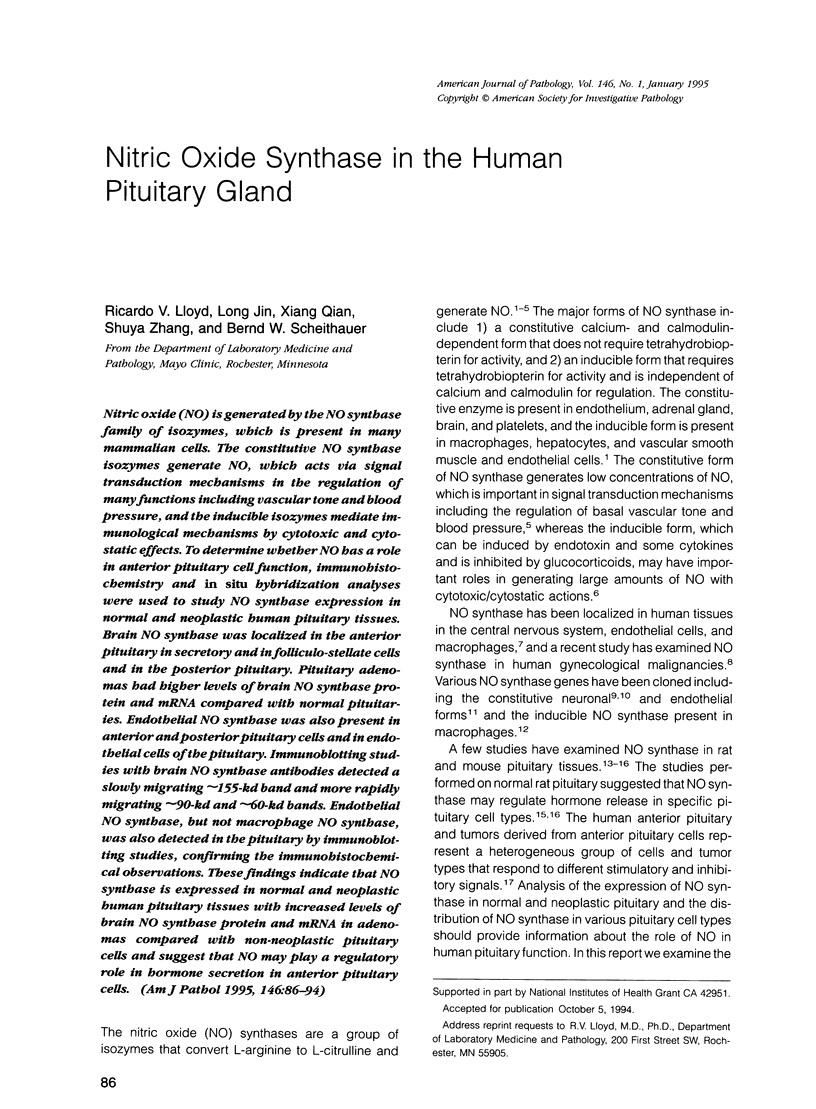
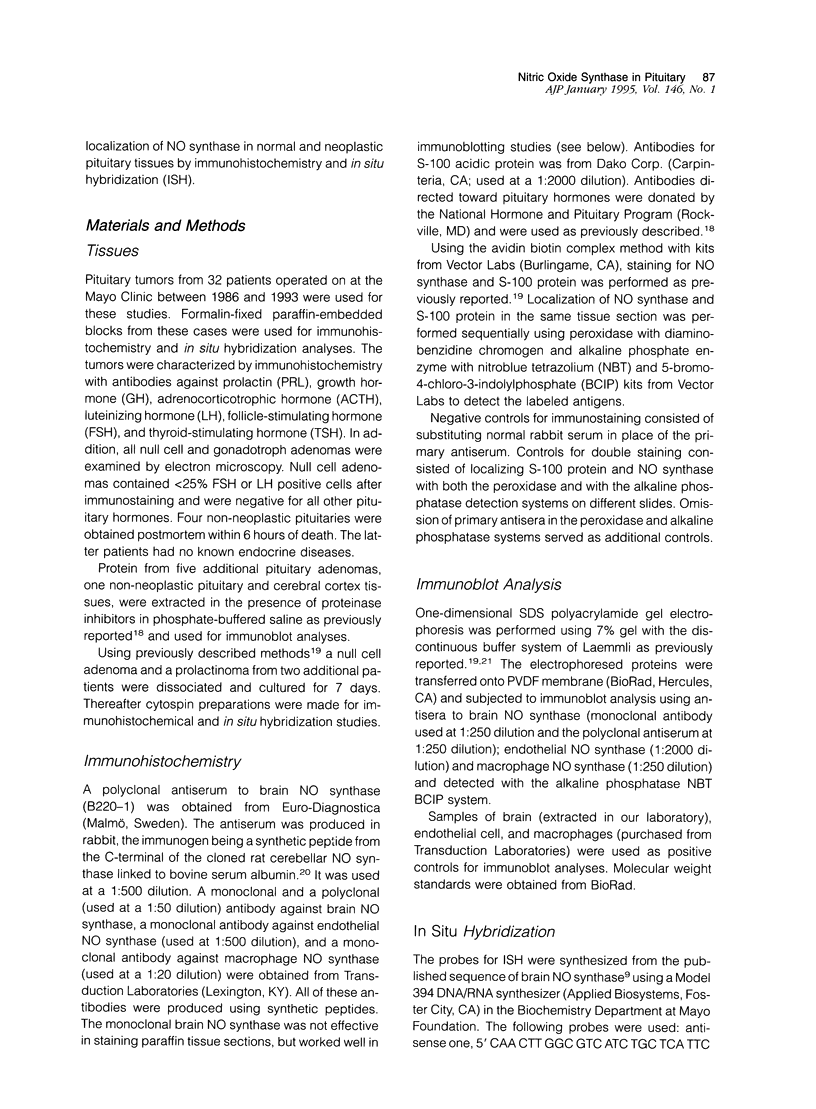
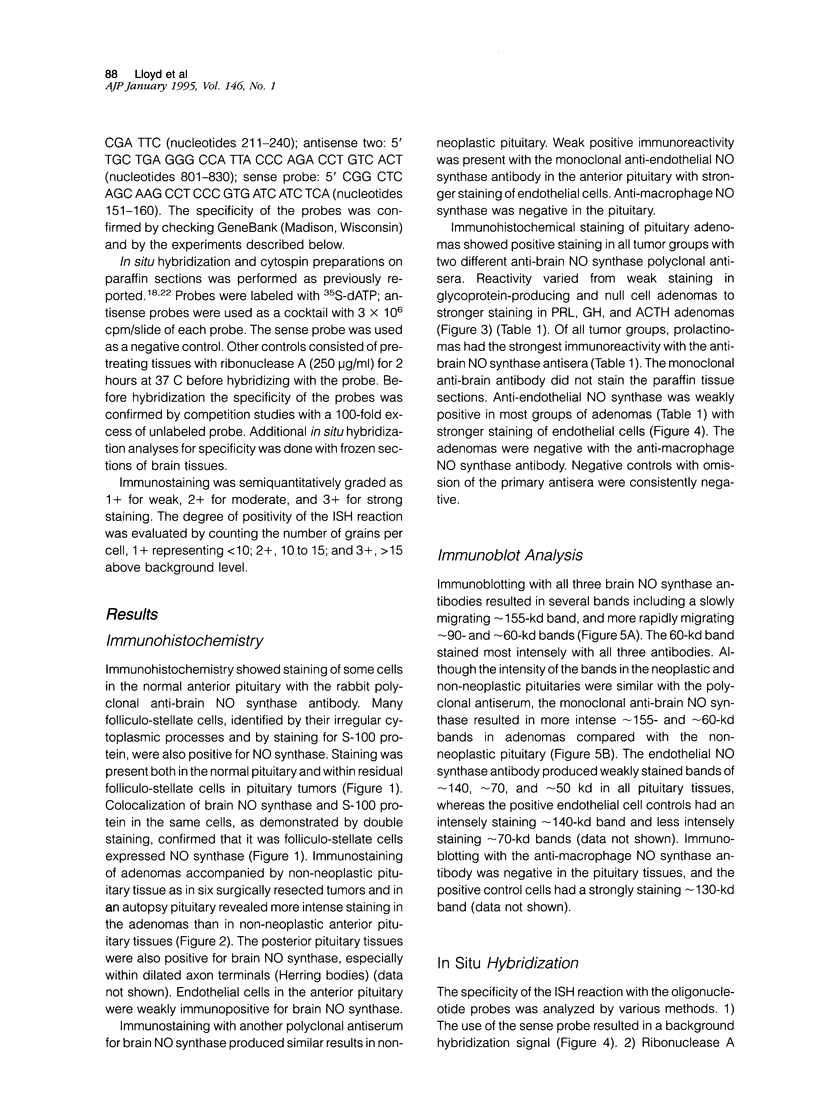
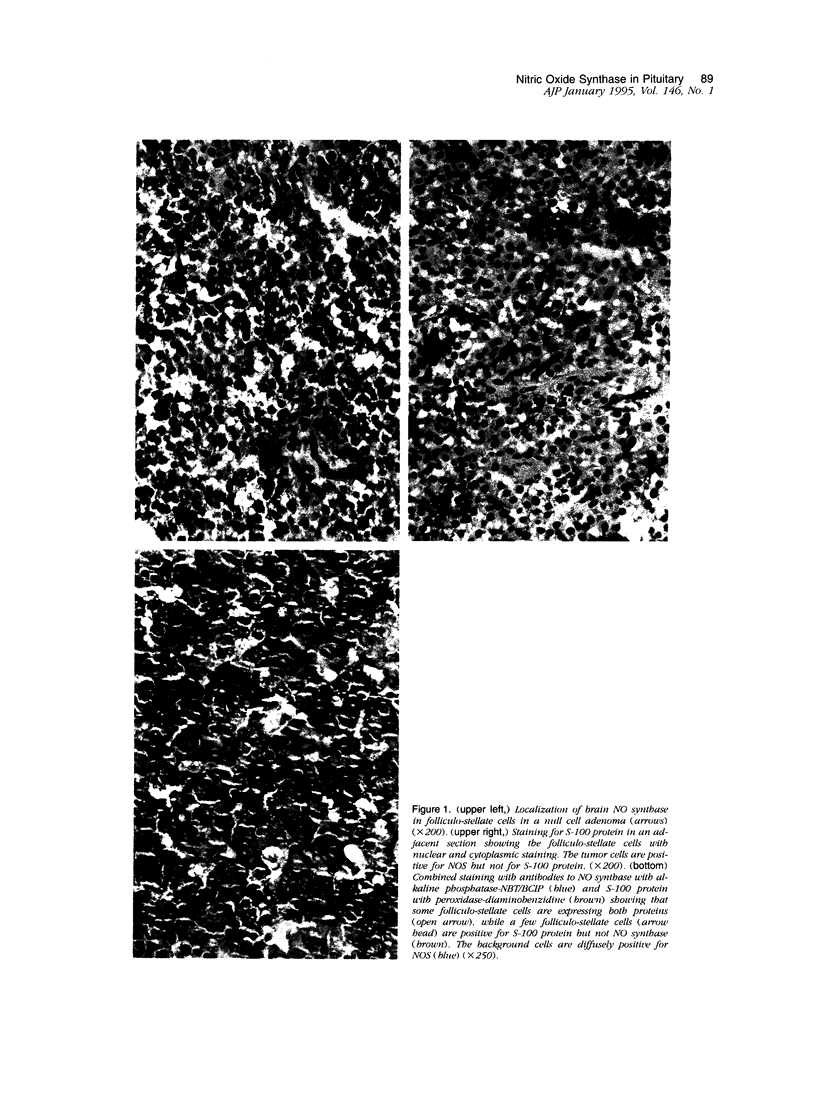
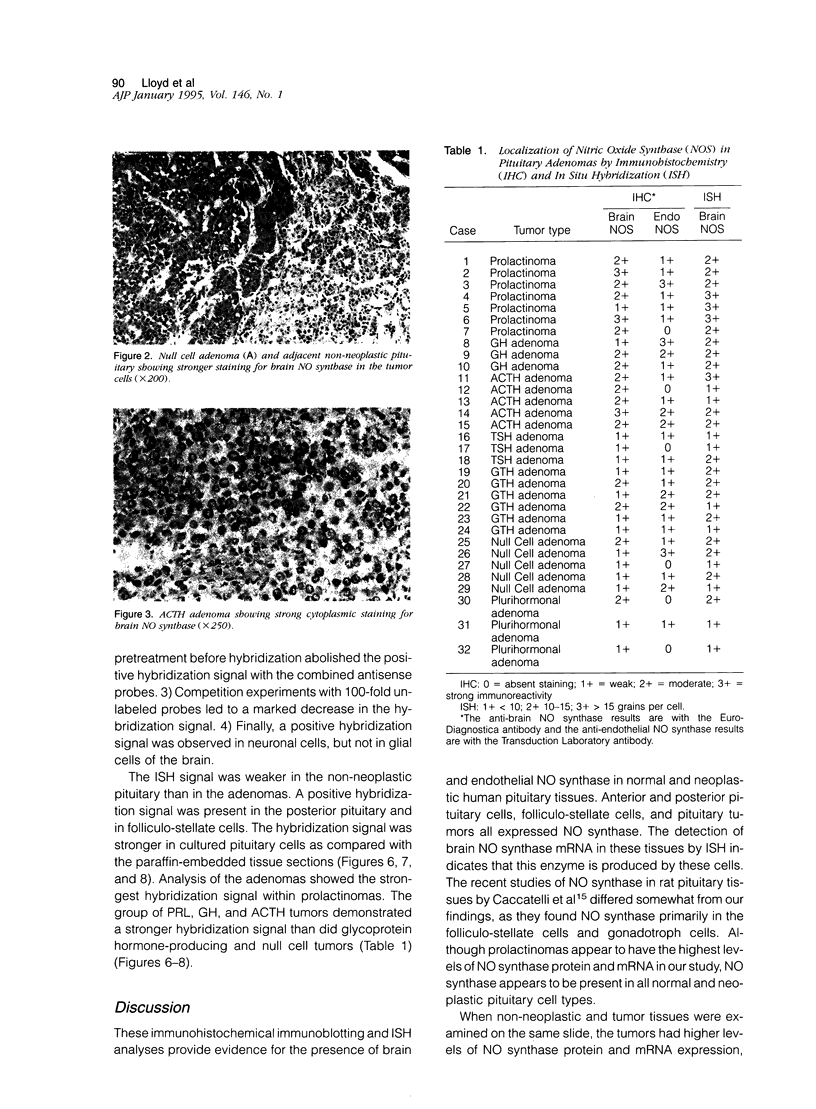
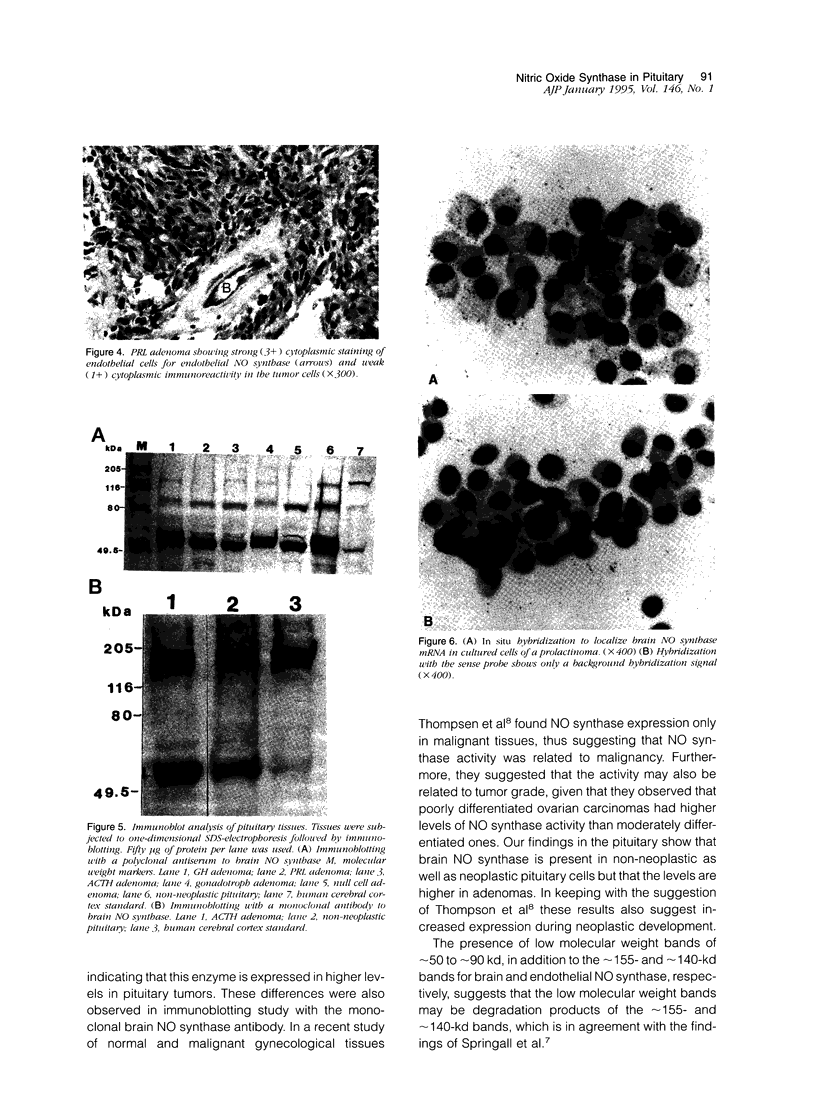
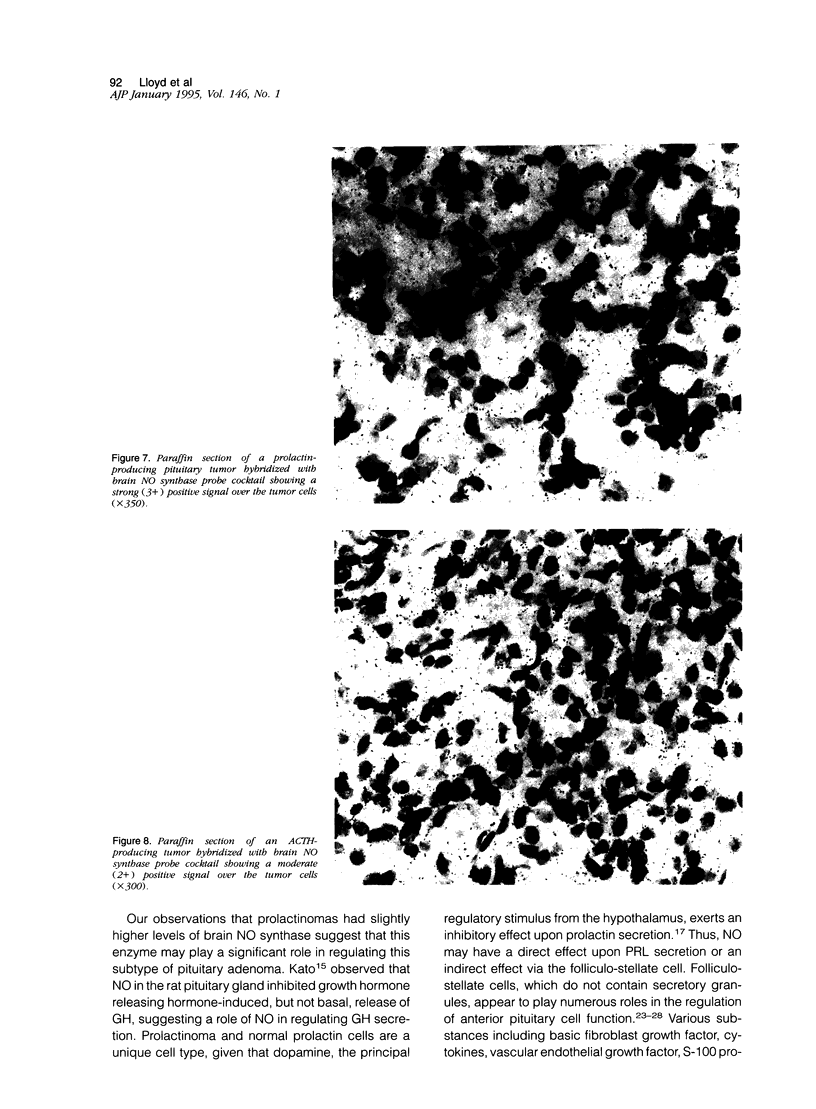
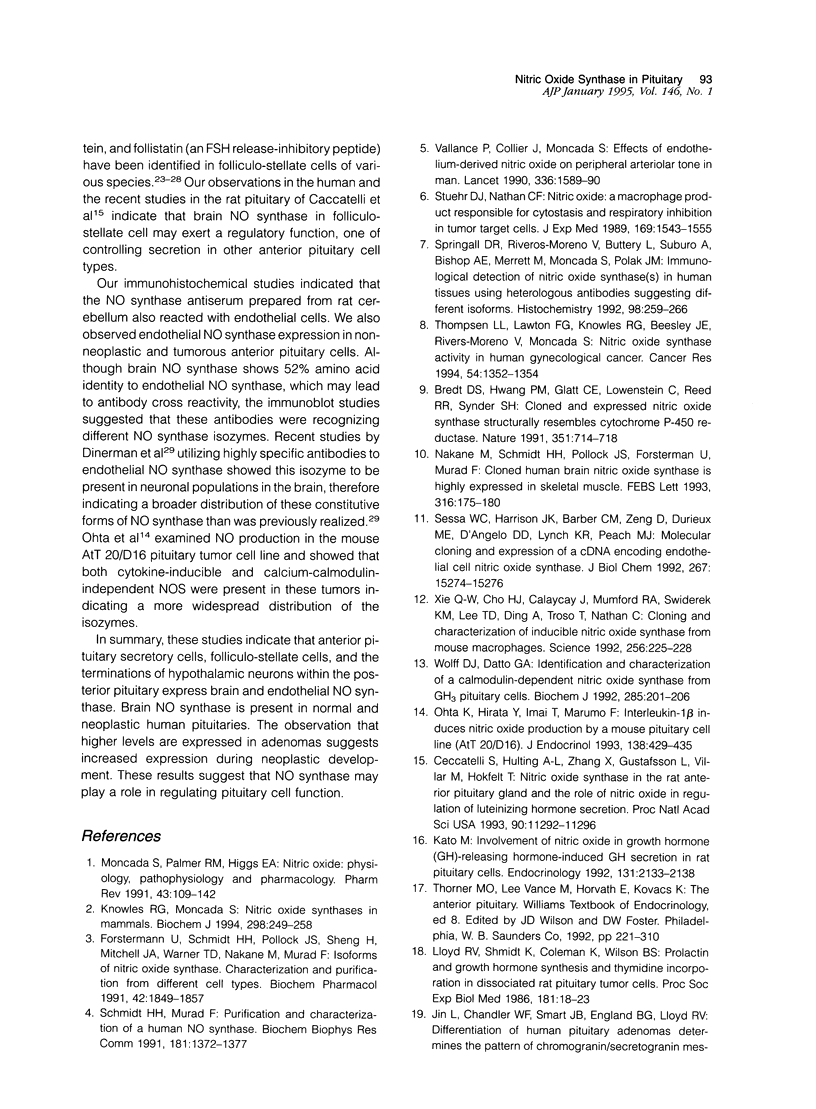
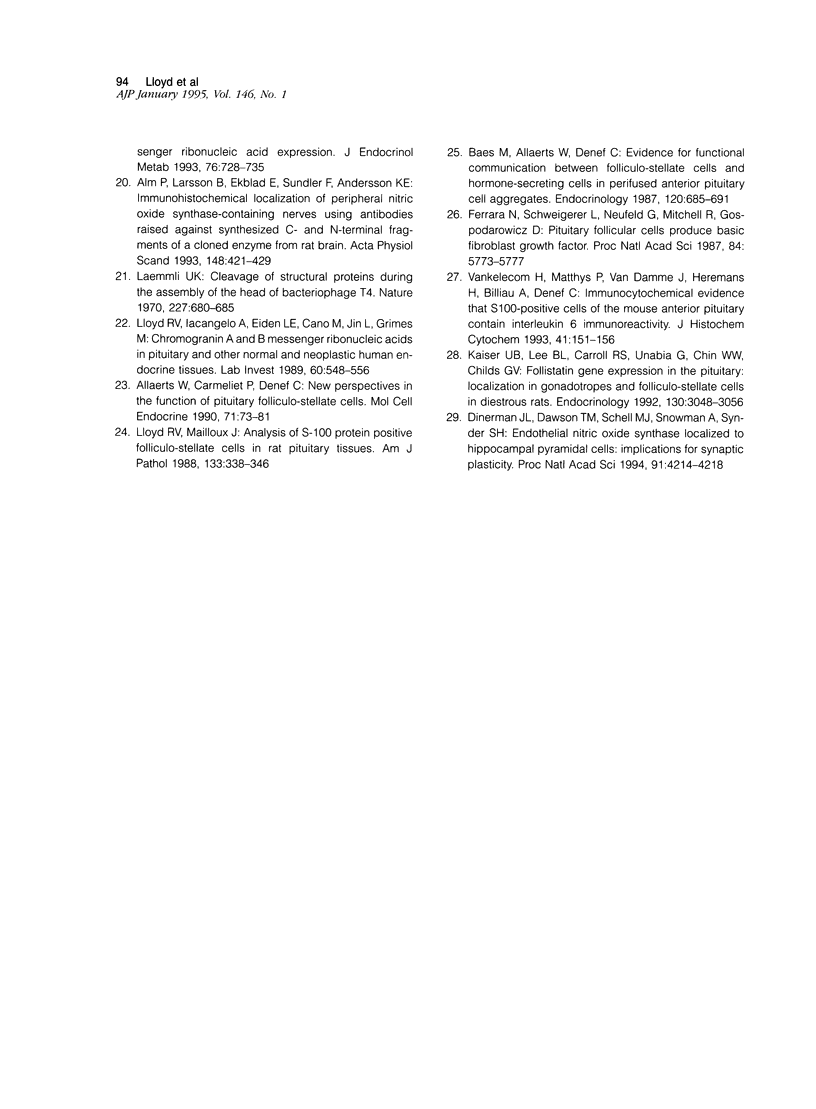
Images in this article
Selected References
These references are in PubMed. This may not be the complete list of references from this article.
- Allaerts W., Carmeliet P., Denef C. New perspectives in the function of pituitary folliculo-stellate cells. Mol Cell Endocrinol. 1990 Jun 18;71(2):73–81. doi: 10.1016/0303-7207(90)90244-3. [DOI] [PubMed] [Google Scholar]
- Alm P., Larsson B., Ekblad E., Sundler F., Andersson K. E. Immunohistochemical localization of peripheral nitric oxide synthase-containing nerves using antibodies raised against synthesized C- and N-terminal fragments of a cloned enzyme from rat brain. Acta Physiol Scand. 1993 Aug;148(4):421–429. doi: 10.1111/j.1748-1716.1993.tb09578.x. [DOI] [PubMed] [Google Scholar]
- Baes M., Allaerts W., Denef C. Evidence for functional communication between folliculo-stellate cells and hormone-secreting cells in perifused anterior pituitary cell aggregates. Endocrinology. 1987 Feb;120(2):685–691. doi: 10.1210/endo-120-2-685. [DOI] [PubMed] [Google Scholar]
- Bredt D. S., Hwang P. M., Glatt C. E., Lowenstein C., Reed R. R., Snyder S. H. Cloned and expressed nitric oxide synthase structurally resembles cytochrome P-450 reductase. Nature. 1991 Jun 27;351(6329):714–718. doi: 10.1038/351714a0. [DOI] [PubMed] [Google Scholar]
- Ceccatelli S., Hulting A. L., Zhang X., Gustafsson L., Villar M., Hökfelt T. Nitric oxide synthase in the rat anterior pituitary gland and the role of nitric oxide in regulation of luteinizing hormone secretion. Proc Natl Acad Sci U S A. 1993 Dec 1;90(23):11292–11296. doi: 10.1073/pnas.90.23.11292. [DOI] [PMC free article] [PubMed] [Google Scholar]
- Dinerman J. L., Dawson T. M., Schell M. J., Snowman A., Snyder S. H. Endothelial nitric oxide synthase localized to hippocampal pyramidal cells: implications for synaptic plasticity. Proc Natl Acad Sci U S A. 1994 May 10;91(10):4214–4218. doi: 10.1073/pnas.91.10.4214. [DOI] [PMC free article] [PubMed] [Google Scholar]
- Ferrara N., Schweigerer L., Neufeld G., Mitchell R., Gospodarowicz D. Pituitary follicular cells produce basic fibroblast growth factor. Proc Natl Acad Sci U S A. 1987 Aug;84(16):5773–5777. doi: 10.1073/pnas.84.16.5773. [DOI] [PMC free article] [PubMed] [Google Scholar]
- Förstermann U., Schmidt H. H., Pollock J. S., Sheng H., Mitchell J. A., Warner T. D., Nakane M., Murad F. Isoforms of nitric oxide synthase. Characterization and purification from different cell types. Biochem Pharmacol. 1991 Oct 24;42(10):1849–1857. doi: 10.1016/0006-2952(91)90581-o. [DOI] [PubMed] [Google Scholar]
- Gude N. M., King R. G., Brennecke S. P. Role of endothelium-derived nitric oxide in maintenance of low fetal vascular resistance in placenta. Lancet. 1990 Dec 22;336(8730):1589–1590. doi: 10.1016/0140-6736(90)93374-x. [DOI] [PubMed] [Google Scholar]
- Kaiser U. B., Lee B. L., Carroll R. S., Unabia G., Chin W. W., Childs G. V. Follistatin gene expression in the pituitary: localization in gonadotropes and folliculostellate cells in diestrous rats. Endocrinology. 1992 May;130(5):3048–3056. doi: 10.1210/endo.130.5.1572312. [DOI] [PubMed] [Google Scholar]
- Kato M. Involvement of nitric oxide in growth hormone (GH)-releasing hormone-induced GH secretion in rat pituitary cells. Endocrinology. 1992 Nov;131(5):2133–2138. doi: 10.1210/endo.131.5.1330492. [DOI] [PubMed] [Google Scholar]
- Knowles R. G., Moncada S. Nitric oxide synthases in mammals. Biochem J. 1994 Mar 1;298(Pt 2):249–258. doi: 10.1042/bj2980249. [DOI] [PMC free article] [PubMed] [Google Scholar]
- Laemmli U. K. Cleavage of structural proteins during the assembly of the head of bacteriophage T4. Nature. 1970 Aug 15;227(5259):680–685. doi: 10.1038/227680a0. [DOI] [PubMed] [Google Scholar]
- Lloyd R. V., Iacangelo A., Eiden L. E., Cano M., Jin L., Grimes M. Chromogranin A and B messenger ribonucleic acids in pituitary and other normal and neoplastic human endocrine tissues. Lab Invest. 1989 Apr;60(4):548–556. [PubMed] [Google Scholar]
- Lloyd R. V., Mailloux J. Analysis of S-100 protein positive folliculo-stellate cells in rat pituitary tissues. Am J Pathol. 1988 Nov;133(2):338–346. [PMC free article] [PubMed] [Google Scholar]
- Lloyd R. V., Schmidt K., Coleman K., Wilson B. S. Prolactin and growth hormone synthesis and thymidine incorporation in dissociated rat pituitary tumor cells. Proc Soc Exp Biol Med. 1986 Jan;181(1):18–23. doi: 10.3181/00379727-181-42219. [DOI] [PubMed] [Google Scholar]
- Moncada S., Palmer R. M., Higgs E. A. Nitric oxide: physiology, pathophysiology, and pharmacology. Pharmacol Rev. 1991 Jun;43(2):109–142. [PubMed] [Google Scholar]
- Nakane M., Schmidt H. H., Pollock J. S., Förstermann U., Murad F. Cloned human brain nitric oxide synthase is highly expressed in skeletal muscle. FEBS Lett. 1993 Jan 25;316(2):175–180. doi: 10.1016/0014-5793(93)81210-q. [DOI] [PubMed] [Google Scholar]
- Ohta K., Hirata Y., Imai T., Marumo F. Interleukin-1 beta induces nitric oxide production by a mouse pituitary tumour cell line (AtT20/D16). J Endocrinol. 1993 Sep;138(3):429–435. doi: 10.1677/joe.0.1380429. [DOI] [PubMed] [Google Scholar]
- Schmidt H. H., Murad F. Purification and characterization of a human NO synthase. Biochem Biophys Res Commun. 1991 Dec 31;181(3):1372–1377. doi: 10.1016/0006-291x(91)92090-7. [DOI] [PubMed] [Google Scholar]
- Sessa W. C., Harrison J. K., Barber C. M., Zeng D., Durieux M. E., D'Angelo D. D., Lynch K. R., Peach M. J. Molecular cloning and expression of a cDNA encoding endothelial cell nitric oxide synthase. J Biol Chem. 1992 Aug 5;267(22):15274–15276. [PubMed] [Google Scholar]
- Springall D. R., Riveros-Moreno V., Buttery L., Suburo A., Bishop A. E., Merrett M., Moncada S., Polak J. M. Immunological detection of nitric oxide synthase(s) in human tissues using heterologous antibodies suggesting different isoforms. Histochemistry. 1992 Nov;98(4):259–266. doi: 10.1007/BF00271040. [DOI] [PubMed] [Google Scholar]
- Stuehr D. J., Nathan C. F. Nitric oxide. A macrophage product responsible for cytostasis and respiratory inhibition in tumor target cells. J Exp Med. 1989 May 1;169(5):1543–1555. doi: 10.1084/jem.169.5.1543. [DOI] [PMC free article] [PubMed] [Google Scholar]
- Thomsen L. L., Lawton F. G., Knowles R. G., Beesley J. E., Riveros-Moreno V., Moncada S. Nitric oxide synthase activity in human gynecological cancer. Cancer Res. 1994 Mar 1;54(5):1352–1354. [PubMed] [Google Scholar]
- Vankelecom H., Matthys P., Van Damme J., Heremans H., Billiau A., Denef C. Immunocytochemical evidence that S-100-positive cells of the mouse anterior pituitary contain interleukin-6 immunoreactivity. J Histochem Cytochem. 1993 Feb;41(2):151–156. doi: 10.1177/41.2.8419456. [DOI] [PubMed] [Google Scholar]
- Wolff D. J., Datto G. A. Identification and characterization of a calmodulin-dependent nitric oxide synthase from GH3 pituitary cells. Biochem J. 1992 Jul 1;285(Pt 1):201–206. doi: 10.1042/bj2850201. [DOI] [PMC free article] [PubMed] [Google Scholar]
- Xie Q. W., Cho H. J., Calaycay J., Mumford R. A., Swiderek K. M., Lee T. D., Ding A., Troso T., Nathan C. Cloning and characterization of inducible nitric oxide synthase from mouse macrophages. Science. 1992 Apr 10;256(5054):225–228. doi: 10.1126/science.1373522. [DOI] [PubMed] [Google Scholar]



